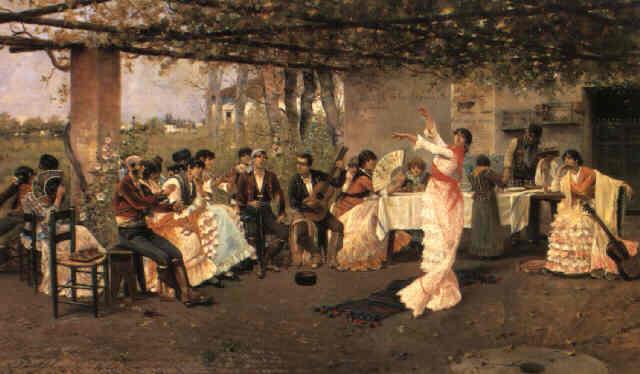Flamenco History

In this entry we will explore the history of flamenco, starting from the oral transmission and the existing records from 1765. Knowing the different influences that, according to the historians, have conferred their particular style on the world´s folk songs.
History of Flamenco
Although we do not have precise references to know at what point in history, by oral transmission we have learned that it is an ancient art and that its cradle is in Andalusia, on the Guadalquivir River.
Flamenco before documented records
There are two phases in the history of flamenco. A prehistory and a history. As in the ages of man, the prehistory of flamenco is all that evolution that is not registered in documents, or whose records are given by oral transmission.
Due to the diverse cultures that passed through our land, flamenco has numerous influences from many different origins (Greek, Roman, Muslim, Gypsy …) In Greek writings we find the melismatic style as a typical characteristic of the song of southern Spain, this style is also present in Flamenco.
From Roman times, we find Marcial and Juvenal’s reviews about the Puellae Gaditanae, young people from Gades, the colony founded by the Phoenicians in the territory of what is now Cadiz. Other theories indicate that the Seguiriya, the Saeta and the Fandango find their cradle in the Semite liturgy, although today those are data that we can not verify. Another influence comes from the Middle Age, in times of the Muslim Spain. The Andalusí music, resulted from the fusion between the one from North Africa, the Christian and the Jewish ones.
Although its origin seems to be varied, what is evident is that throughout history, flamenco has been emerging thanks to the influences and cultural history of our country.
First records of flamenco
There is a time when we can begin to treat flamenco in a professional and documented way. Between 1765 and 1860. It is from this period that three important craddles, which would be Cadiz, Jerez de la Frontera, and the district of Triana, in Seville, would begin to emerge. If you want to know the origin of Flamenco in Granada you must read this post.
It is from this moment, when the flamenco would become a part of a Spanish dance, it began to evolve and to be performed in schools and celebrations. An interesting fact is that flamenco was accompanied only by the touch of the palms and not with the guitar that characterizes it today. Even so, some composers like Julian Arcas would already begin to compose flamenco sounds.
Golden Age of Flamenco
It is from 1860 until approximately 1910, where flamenco begins to evolve, giving name to this period as The Golden Age of Flamenco. This began to be accompanied by instruments, singing and dancing. This last one, acquires a splendor, becoming the greater attraction in the flamenco, being accompanied of the guitar, which turned a acompulsory instrumento to the singing as for the dance.
Opera Flamenca
Between 1910 and 1955, flamenco rise to a new stage, whose name was Opera Flamenca. This era is characterized by lighter singins, known in our days as fandango, and ida y vuelta singings, a musical style brought by immigrants from Latin America. This new path that flamenco had taken was not uniform all over the world and in 1922 a group of intellectuals came to create a contest in Granada, with the aim of finding new values for authentic flamenco singing. This group would be known as the Generation of 27, which almost all of us have studied.
The Renaissance of Flamenco
The next era of flamenco, would be known as the Renaissance of flamenco emerged from 1955. The main author who represented it was Antonio Mairena. In this moment, flamenco begins to develop in flamenco tablaos, theaters and festivals, where there were great personalities of the dance, who pushed flamenco to what it represents today. Paco de Lucía marks the beginning of a stage full of splendor where the guitar acquires a universal dimension, also authors like Manuel Cano, Víctor Monge Serranito and Manolo Sanlúcar.
From this moment on, flamenco continued to evolve, becoming universal. We can notice how new tendencies with other musical styles, are appearing. This has led to a controversy between the defenders of the conservation of the Flamenco orthodoxy, and others more interested in its evolution and its permeability.
Nowadays
On the other hand, flamenco has reached the five continents, thanks to the artists who disseminated it. This has given rise to a new era, where the media are witnesses of its grace, its force and its duende. For this reason we can no longer affirm that Flamenco is an artistic manifestation exclusively of Andalusia, being able today to attend in Andalusia shows of the most authentic purism and classicism flamenco interpreted by a Japanese bailaora or Italian guitarists, before the respect of a great public of understood, while the greatest Andalusian artists bring flamenco to important stages throughout the world.
Of course Andalusia remains the capital of flamenco, where it is most concentrated and where more often this art can be enjoyed in its purest form. And being an intimate music par excellence, where you will feel better, it will be in that small circle of friends, where only a guitar, a voice, and that body dancing at a dawn, and this is what we call “a flamenco spree “..
Flamenco is like Andalusia itself: a land that finds its raison d’être in diversity, a place where a multitude of points of view coexist and where all its inhabitants are aware that it enriches them. Long life, therefore, to flamenco, because it not only represents a town: it also differentiates it from the others. The future of flamenco is promising, given its declaration as a World Heritage Site by UNESCO.
-
Recent Posts
Recent Comments
Archives
- June 2025
- May 2025
- April 2025
- March 2025
- February 2025
- December 2024
- November 2024
- October 2024
- August 2024
- July 2024
- June 2024
- May 2024
- April 2024
- March 2024
- February 2024
- January 2024
- December 2023
- November 2023
- October 2023
- September 2023
- August 2023
- July 2023
- June 2023
- April 2023
- March 2023
- January 2023
- December 2022
- November 2022
- October 2022
- November 2021
- October 2021
- February 2020
- January 2020
- December 2019
- November 2019
- October 2019
- September 2019
- August 2019
- July 2019
- June 2019
- May 2019
- April 2019
- March 2019
- February 2019
- January 2019
- December 2018
- November 2018
- October 2018
- September 2018
- August 2018
- July 2018
- June 2018
- May 2018
- April 2018
- March 2018
- February 2018
- January 2018
- December 2017
- November 2017
- October 2017
- September 2017
- August 2017
- July 2017
- June 2017
- May 2017
- March 2017
- February 2017
- January 2017
- December 2016
- November 2016
- October 2016
- September 2016
Categories
Meta
